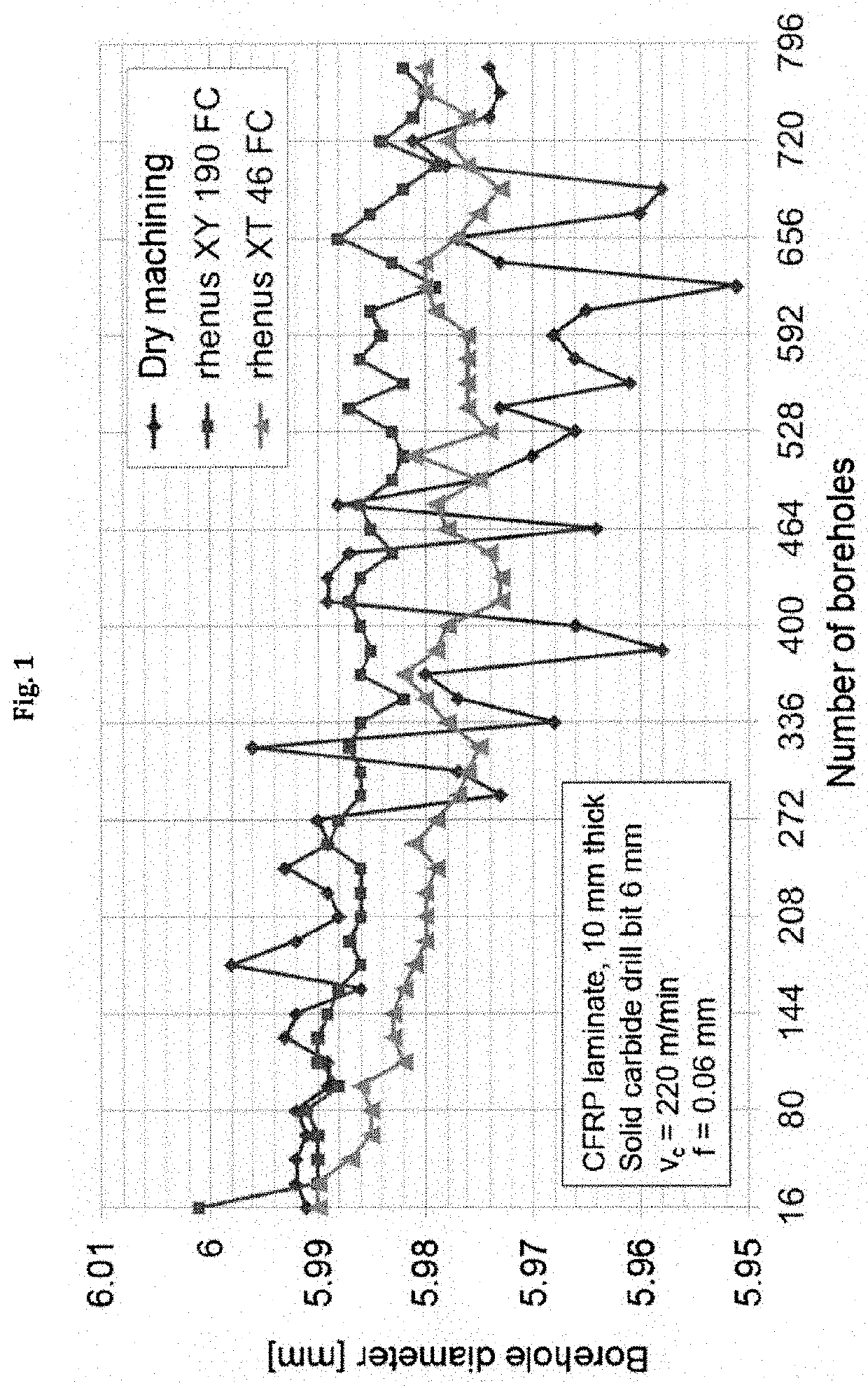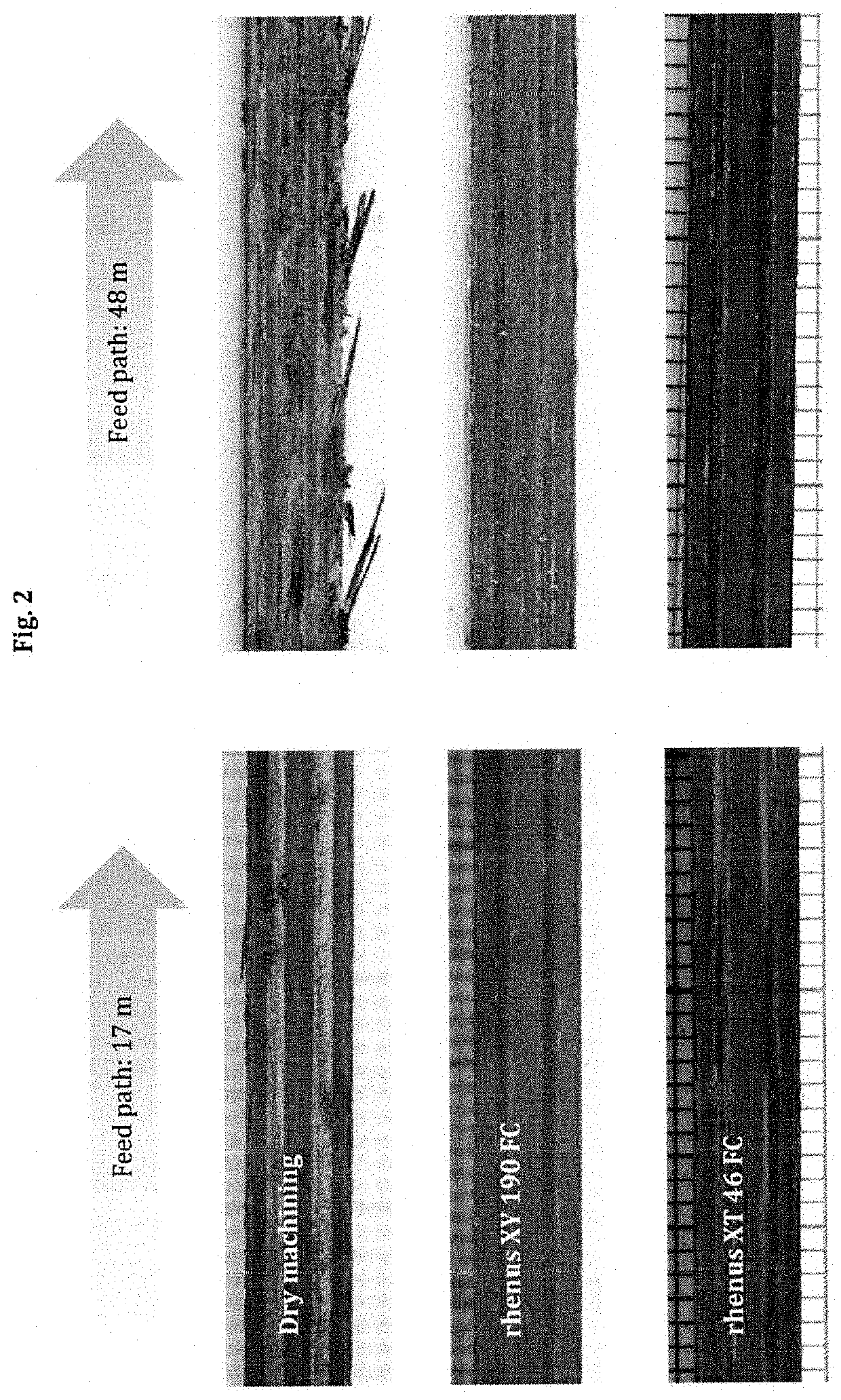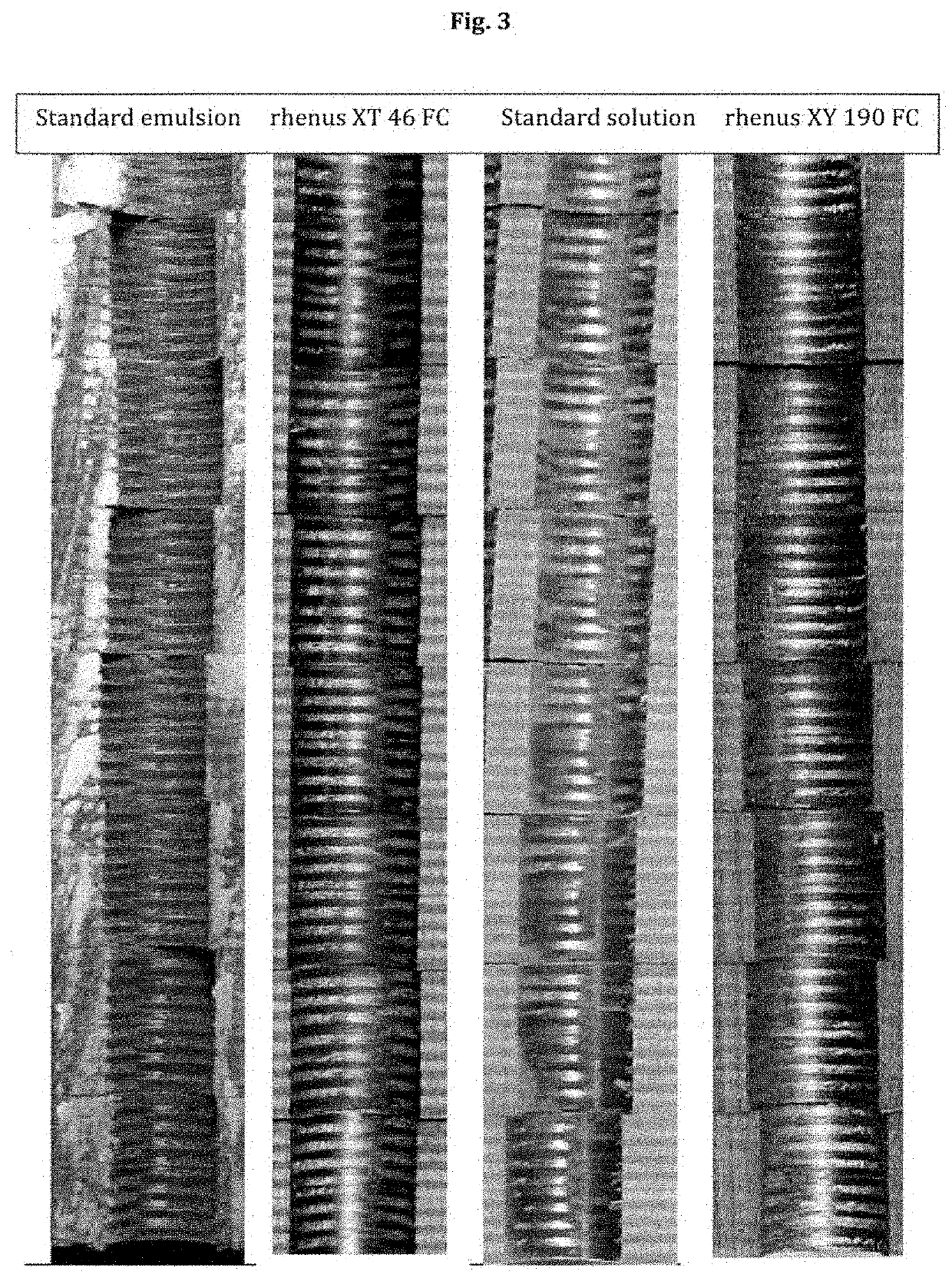Coolant for composite materials
a composite material and coolant technology, applied in the field of coolants, can solve the problems of high degree of tool wear, and high degree of tool wear, and achieve the effects of reducing friction and consequently tool wear, facilitating heat dissipation, and reducing health risks
- Summary
- Abstract
- Description
- Claims
- Application Information
AI Technical Summary
Benefits of technology
Problems solved by technology
Method used
Image
Examples
example 1
[0050]The composition of a feasible concentrate of the coolant according to the invention is shown in the following table. The substances specified in the table are to be mixed together under vigorous stirring. The figures in the table represent % by weight based on the weight of the coolant concentrate that is in the form of an emulsion.
[0051]
Water11.42Monoisopropanolamine2Methyl diethanolamine10Triethanolamine (pure, 90%)9.7Benzotriazole (corrosion inhibitor)0.9IRGACOR ® L 190-85 (corrosion inhibitor)2.1Mineral oil6Phenoxyethanol10SNS 520 (corrosion inhibitor)5TPS 20 (dialkyl sulfide)4TPS 32 (dialkyl sulfide)8Edenol ® D 81 (epoxidized ester)4Lubrhophos ® LB 400 E ALL (phosphoric acid ester)2Diacid ® 1550 (corrosion inhibitor)3Fosfodet ® RS 0602 (alkyl phosphate)4AC 101 (corrosion inhibitor)4Emulsifier9Maleic acid dibutyl ester4Benzisothiazolinone0.49Butylbenzisothiazolinone0.09Defoamer0.3
[0052]For application purposes, the concentrate is to be diluted w...
example 2
on of the Coolant (Solution)
[0053]The composition of a feasible water-soluble concentrate of the coolant according to the invention is shown in the following table. The substances specified in the table are to be mixed together under vigorous stirring. The figures in the table represent % by weight based on the weight of the coolant concentrate
[0054]
Water34.11IRGACOR ® L 190-85 (corrosion inhibitor)4Monoethanolamine6.9Triethanolamine30Sebacic acid (corrosion inhibitor)3Isononanoic acid (corrosion inhibitor)5Tolyltriazole0.7BREOX 75W 2050 (PAG)15Defoamer0.2Iodocarbamate0.6Benzisothiazolinone0.49
[0055]For application purposes, the concentrate is to be diluted with water in a weight ratio of 1:9.
example 3
est for Drilling
[0056]The machining quality for drilling of a 10-mm-thick carbon fiber-reinforced plastic plate was tested in three runs: without a coolant, with the coolant according to the invention, called rhenus XT 46 FC (Example 1), and with a fully water-soluble coolant, called rhenus XY 190 FC in FIG. 1. For each of the three test runs, a new, solid carbide, 6-mm drill bit was used at a drilling speed Vc of 120 m / min. More than 720 holes were drilled with each bit and the diameter of the boreholes was subsequently determined. The graph in FIG. 1 shows that, during the dry drilling process without the use of a coolant, an increase in the number of boreholes also results in greater fluctuations in the borehole diameter. These fluctuations in terms of the borehole diameter are significantly greater in contrast to drilling operations with a coolant.
PUM
| Property | Measurement | Unit |
|---|---|---|
| kinematic viscosity | aaaaa | aaaaa |
| kinematic viscosity | aaaaa | aaaaa |
| thickness | aaaaa | aaaaa |
Abstract
Description
Claims
Application Information
 Login to View More
Login to View More - R&D
- Intellectual Property
- Life Sciences
- Materials
- Tech Scout
- Unparalleled Data Quality
- Higher Quality Content
- 60% Fewer Hallucinations
Browse by: Latest US Patents, China's latest patents, Technical Efficacy Thesaurus, Application Domain, Technology Topic, Popular Technical Reports.
© 2025 PatSnap. All rights reserved.Legal|Privacy policy|Modern Slavery Act Transparency Statement|Sitemap|About US| Contact US: help@patsnap.com



